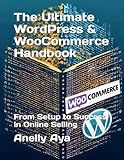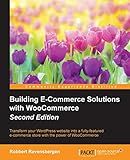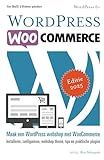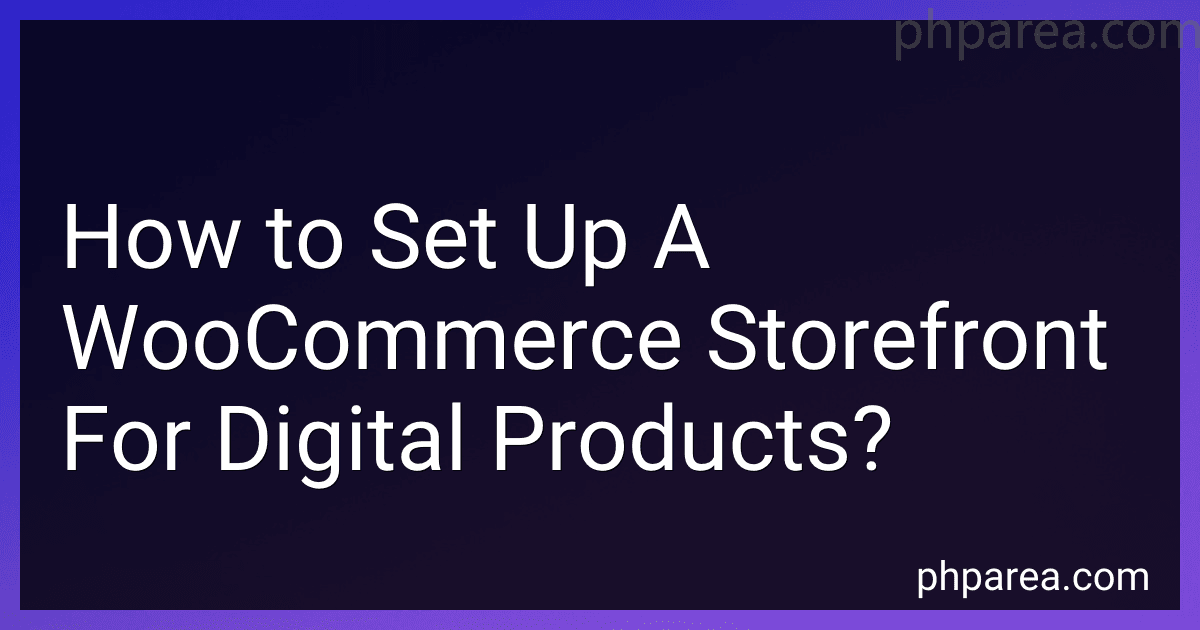Best WooCommerce Tools to Buy in December 2025

The Ultimate WordPress & WooCommerce Handbook: From Setup to Success in Online Selling



WordPress WooCommerce: Tienda online con WooCommerce (Spanish Edition)



Building E-Commerce Solutions with WooCommerce - Second Edition



WordPress WooCommerce: Webshop met WooCommerce (Dutch Edition)



Formation Woocommerce: Créer et exploiter une boutique en ligne (French Edition)



Setting Up and Running an Online Store


To set up a WooCommerce storefront for digital products, follow these steps:
- Install WooCommerce: Start by installing the WooCommerce plugin on your WordPress website. Go to the Plugins tab, click on "Add New," search for WooCommerce, and click on "Install Now." Activate the plugin after installation.
- Configure WooCommerce: After activating WooCommerce, you will be guided through the setup wizard. Follow the prompts to configure basic settings like currency, location, payment gateways, and shipping options. Customize these settings according to your specific requirements.
- Add Digital Product Categories: Create categories to organize your digital products. Go to Products > Categories, enter a name for the category, and assign a slug (URL) if desired. Click "Add New Product Category" to save it.
- Add Digital Products: To add a new digital product, go to Products > Add New. Provide a title, description, and details for your product. Scroll down to the 'Product Data' section, choose the 'Downloadable' option, and enable it.
- Configure Downloadable Files: After enabling the downloadable option, you can add files that customers will receive after purchase. Click on 'Choose File,' select the digital file you want to offer, and set the number of downloads allowed and an expiration time (optional). Repeat this step if you have multiple files for the product.
- Set a Price: In the 'Product Data' section, specify a price for your digital product. You can also enable or disable options like 'Virtual' (as digital products don't require shipping) and 'Sold Individually' if applicable.
- Add Product Images: Upload product images to showcase your digital product. Click on 'Set Product Image' and choose an image from your media library or upload a new one. You can also add additional gallery images for better presentation.
- Customize Product Page: Use the 'Product Short Description' field to provide a brief description of your digital product. Additionally, you can customize the product page layout, display related products, and other options under 'Product Data.'
- Publish the Product: Once you've added all the necessary details, click on 'Publish' to make your digital product live on your WooCommerce storefront.
- Repeat Steps for Other Products: Follow the previous steps to add more digital products to your store. Categorize them appropriately, set prices, and configure their respective download files.
- Test the Checkout Process: Before launching your WooCommerce storefront, it's crucial to test the checkout process to ensure customers can purchase and receive their digital products seamlessly.
By following these steps, you can easily set up a WooCommerce storefront for selling digital products on your WordPress website.
What is the difference between physical and digital products in WooCommerce?
The main difference between physical and digital products in WooCommerce is the way they are delivered to customers.
- Physical Products: These are tangible goods that are physically shipped to the customer's address. Examples include clothing, electronics, books, etc. In WooCommerce, you will typically need to set up and manage shipping options for physical products. Shipping rates, carrier integration, weight-based shipping, and inventory management are important considerations for physical products.
- Digital Products: These are intangible goods that are downloaded or accessed online, such as software, e-books, music, videos, or online courses. With digital products, there is no physical shipping involved. Instead, customers receive the product instantly or after a successful payment. WooCommerce handles the delivery of digital products by allowing you to upload the files to the website, apply any necessary restrictions or permissions, and provide secure download links to customers after purchase.
It's worth noting that some products can be a combination of both physical and digital components. For example, a physical book may also offer a digital version that can be downloaded after purchase. In WooCommerce, you can set up a product with both physical and digital components, thereby providing customers with flexible choices.
How to create a product showcase in WooCommerce?
To create a product showcase in WooCommerce, follow these steps:
- Install and activate WooCommerce plugin: Go to your WordPress dashboard, navigate to Plugins -> Add New, search for WooCommerce, and click on the "Install Now" button. Once installed, click on the "Activate" button to activate the plugin.
- Set up your WooCommerce store: After activating WooCommerce, a setup wizard will guide you through the initial setup process. Follow the on-screen instructions to configure your store, including currency, payment gateways, shipping options, etc.
- Add products: Now, you need to add products to showcase in your WooCommerce store. Go to Products -> Add New. Enter the product title, description, price, and any other relevant details. You can also upload product images and assign categories and tags to help organize your products.
- Configure product settings: Configure the product settings such as SKU, stock status, and visibility. You can set the product as in stock or out of stock, and choose whether to display the product on your store or hide it.
- Customize the product showcase layout: WooCommerce provides various options to customize the product showcase layout. You can choose from different design themes or use a custom theme. You can also customize the product pages by adding additional information, reviews, related products, etc.
- Set up product categories and tags: To help users easily find products, create categories and assign products accordingly. You can create categories like "Clothing," "Electronics," etc., and assign products to relevant categories. Additionally, you can add tags to individual products to provide more specific search options.
- Configure product attributes: Attributes allow users to filter products based on specific criteria. For example, if you are selling clothes, attributes can include size, color, or material. Configure the attributes in the WooCommerce settings and assign them to relevant products.
- Configure product variations (if applicable): Some products may have different variations, such as different sizes or colors. In such cases, configure product variations to allow customers to choose their preferred options.
- Set up payment and shipping options: Configure the payment gateways, such as PayPal or Stripe, to accept online payments. Set shipping options according to your preferences, including flat rate, free shipping, or real-time shipping rates.
- Preview and publish your product showcase: Once you've set up your product showcase, preview it to ensure everything looks as desired. You can then publish your store and make it accessible to customers by sharing the store's URL.
By following these steps, you can create a product showcase in WooCommerce and start selling your products online.
What are some effective marketing strategies for a WooCommerce storefront?
- Optimize your website for search engines: Use keywords, meta tags, and relevant content to improve your website's SEO and drive organic traffic.
- Content marketing: Create valuable and informative content related to your products or industry. This could include blog posts, tutorials, videos, or ebooks. Share this content on social media and through email campaigns to attract and engage your target audience.
- Paid advertising: Utilize platforms like Google Ads, Facebook Ads, or Instagram Ads to reach a wider audience and drive targeted traffic to your WooCommerce storefront. Target specific demographics, interests, or behaviors to maximize the effectiveness of your ads.
- Social media marketing: Establish a presence on relevant social media platforms like Facebook, Instagram, Twitter, etc. Share visually appealing images of your products, engage with your audience, run contests or giveaways, and even collaborate with influencers to gain more visibility.
- Email marketing: Build an email list of your customers and potential leads. Send personalized and targeted emails with exclusive offers, discounts, new product announcements, or helpful tips. Automated email sequences, abandoned cart reminders, and personalized recommendations can also be effective for boosting sales.
- Customer reviews and testimonials: Encourage satisfied customers to leave reviews and testimonials on your website or other relevant platforms. Positive reviews can build trust and credibility, influencing other potential customers to make a purchase.
- Partner with influencers and affiliates: Collaborate with influencers or bloggers who have a relevant audience. They can promote your products through sponsored content or affiliate links, driving more traffic and potential sales to your WooCommerce storefront.
- Cross-selling and upselling: Use plugins and strategies to display related products or recommend complementary items to customers during the checkout process. This can enhance the shopping experience and increase the average order value.
- Offer discounts and promotions: Create urgency and incentivize purchases by offering limited-time discounts, seasonal promotions, or free shipping for a specific number of orders. Promote these offers through email marketing, social media, or on your website.
- Retargeting ads: Use retargeting techniques to reach people who have previously visited your website or shown interest in your products. Show them relevant ads to remind and encourage them to make a purchase.
Remember, every business is unique, so experiment with different strategies, track data and analytics, and adapt your marketing approach accordingly to find the most effective strategies for your WooCommerce storefront.
What is the difference between a simple and variable product in WooCommerce?
In WooCommerce, a simple product is a standalone item with a fixed price, while a variable product has multiple options or variations with different attributes such as size, color, or price.
Here are the main differences between simple and variable products in WooCommerce:
- Single vs. Multiple Options: A simple product represents a single item with no variations or options to choose from. On the other hand, a variable product allows the customer to select different attributes or variations, such as size, color, or style, which may have different prices.
- SKU and Inventory Management: Simple products have a single SKU (Stock Keeping Unit) as they represent a single item. In contrast, variable products have unique SKUs for each variation, which simplifies inventory management.
- Price Management: Simple products have a fixed price that remains the same regardless of any variations. In variable products, each variation can have a different price, allowing customers to choose the option that suits them best.
- Product Attributes and Variation Controls: While simple products do not have attributes like size or color, variable products have attribute sets. These attributes enable customers to choose from different variations of the product. For example, a t-shirt can have variations based on size (small, medium, large) and color (red, blue, green).
- Backend Configuration: For a simple product, you only need to set the price and other basic details. However, variable products require more configuration as you need to define attributes, create variations, and set prices for each variation.
- Display on Product Page: Simple products have a straightforward display on their product page, showing only the base information without any dropdown or selection fields. Variable products, on the other hand, show dropdowns or selection fields for customers to choose attributes and variations.
In summary, simple products are single items with fixed prices, while variable products offer multiple options or variations with different attributes and prices. Variable products require more configuration but give customers a wider range of options to choose from.
How to create a product in WooCommerce for digital downloads?
To create a product in WooCommerce for digital downloads, follow these steps:
- Login to your WordPress dashboard.
- Navigate to the WooCommerce tab in the sidebar and click on "Products."
- Click on "Add New" to create a new product.
- Enter the product name, description, and other relevant information in the respective fields.
- Scroll down to the "Product Data" section and select the "Downloadable" option.
- After selecting "Downloadable," additional options will appear. Here, you can configure various settings related to your digital download:
- Downloadable Files: Upload the digital files associated with the product. You can add multiple files if your product has multiple downloads.
- Download Limit: Set a limit on the number of times customers can download the file.
- Download Expiry: Specify an expiration date after which customers can no longer access the download.
- File Type: Specify the type of file you are uploading (e.g., zip, mp3, pdf, etc.).
- File URL: Provide the URL where the digital file can be downloaded from (optional).
- Grant access to downloadable products after payment: Check this box if you want customers to access the download immediately after purchase.
- Configure the remaining settings for your product, such as price, product categories, tags, images, etc.
- Click on "Publish" to make the product available on your WooCommerce store.
Note: Make sure you have properly set up your payment gateway and configured the appropriate options for digital downloads in the WooCommerce settings.
